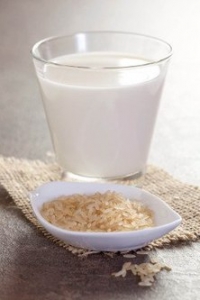New video on our channel: Assaf sheep produce milk, wool, and meat! Dairy sheep farming at Panaev Farms

PIONERPRODUKT.by continues publishing videos from the AgroExpedition "Agriculture of Uzbekistan."
This is the final, fifth episode about the PANAEV FARMS enterprise in the Republic of Karakalpakstan, in Nukus. In it, we'll discuss dairy sheep farming and the Assaf sheep breed.
Assaf is a dairy and beef sheep breed developed in Israel in 1955.
The breed was created by crossing Awassi sheep with East Friesian rams. Assaf sheep have coarse wool, and the breed is adapted to nomadic and semi-nomadic livestock farming. Under Israeli conditions,A female sheep produces three lambs in two years, with an annual MILK yield of 450 liters.
Assaf sheep were exported to Spain, Portugal, Chile, and Peru, where they also became popular due to their high productivity and adaptability to various climatic conditions.
Assaf sheep are also bred in RUSSIA and Uzbekistan.
The main characteristics of Assaf sheep:
- Assaf sheep have a long body and legs, a medium-sized rump and a smalltail .
- The average height at the withers of rams is 80 cm, and of ewes - 70 cm.
- Productivity direction: dairy and MEAT
- Wool is coarse.
- Color: predominantly white, sometimes with dark markings on the HEAD and limbs
- Live weight: rams - 80-120 kg, ewes - 60-80 kg
- Fertility: on average 1.6-2.4 lambs per lambing
- Average milk yield: 450-550 liters of milk per year (with two lactations in 2 years)
- Milk fat content: 5.5-6.5%
- Protein content: about 5%
Assaf lambs grow quickly, gaining up to 250-300 g per day, and reach slaughter weight by 3-4 months.
The Assaf breed is well adapted to arid and semi-arid regions. Assafs are suitable for both pasture and stall-feeding. Thanks to their East Friesian genes, they require high-quality feed while retaining the undemanding nature inherited from the Awassi.
The main advantages and disadvantages of the Assaf breed:
Advantages :
✅ High milk productivity
✅ Good fertility and multiple births
✅ Fast growth of lambs and high meat yield
✅ Resistance to hot and dry climates
Disadvantages:
❌ Higher need for high-quality feed compared to other breeds
❌ Low wool quality, low yield of pure fiber
❌ Demanding of living conditions (develop better with intensive feeding)
❌ Decreased productivity in cold climates
Read together with it:
- He crawled to the icon with prayer. The true story of a man who overcame drug addiction.Alexander Ovchinnikov. Topic News. Our project's hero was a drug addict for many years. The thought that this was a dead end never left him, but his addiction proved stronger. One day, when he could no longer walk, he crawled to an icon in prayer. This became his first step toward a new life. Today, he heads a charity center that helps those who have given up hope and are unable to quit ALCOHOL an...
- Брянская область вошла в число лидеров среди регионов России по товарообороту на БУТБ12 ноября, Минск. Брянская область вошла в число лидеров среди регионов России по товарообороту на Белорусской универсальной товарной бирже. Об этом сообщили БЕЛТА в пресс-службе БУТБ.Согласно данным о сделках, заключенных резидентами РФ на Белорусской универсальной товарной бирже в январе - октябре 2......
- Цены на говядину в мире впервые в истории превысили $7 за килограммАналитики напомнили, что цены на мясо растут уже пятый месяц подряд. В октябре килограмм говядины подорожал еще на три процента. Если сравнивать с ценами прошлого года, рост составил 17 процентов. Эксперты связывают рост цен с ситуацией в мире: из-за роста цен на молоко и продукцию из него фермеры снижают объемы поголовья, направляемого на мясо. Кроме того, повысился спрос на импортную говядину в ...
- "Вода лечит, дает силы". Этот белорус строит уникальные лодкиНовости темы Душа этого полешука знает тайны водных просторов Ясельды, на берегу которой он родился и рос, Мотольского, Споровского и других озер в агрородке Мотоль, что на Брестчине. Сегодня практически один в Беларуси создает такие деревянные лодки, которые просто летят по водной глади. Потому и пользуются огромной популярностью у земляков и не только. Мы побывали в гостях у Пал Палыча, которому...
- Новое видео на нашем канале: Учёные доят кобыл. Как развивается молочное коневодство в Казахстане. Наука и практика в коневодствеКонтрольная дойка кобыл на кумысной ферме Алаколь Асыл Жылқысы в Казахстане. Учёные исследуют состав кобыльего молока, породы и методы молочного коневодства в полевых условиях. Учёные проводят контрольную дойку кобыл, измеряют удои, берут пробы молока для химанализа. Параллельно берут волосяные луковицы для генотипирования - материал отправляют в лабораторию биологии и биотехнологии в Алматы. Конт...


